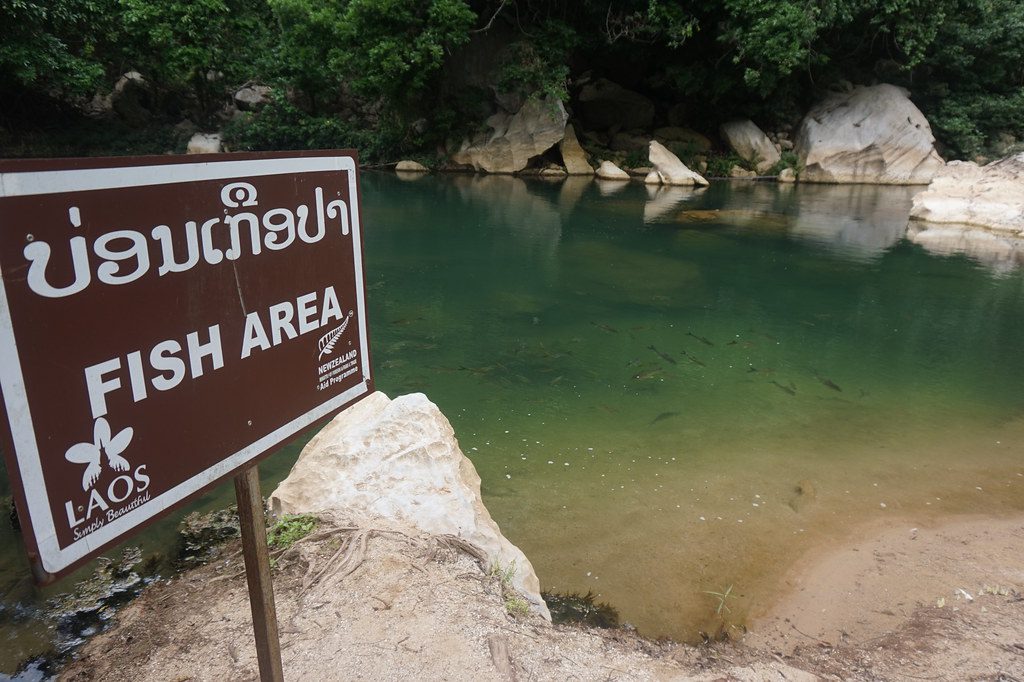Friday October 18, 2024

Today’s Flashback Friday spotlights Fish Conservation Zones (FCZs) in Southeast Asia, and breaks down some of the crucial steps involved in developing, maintaining, and communicating the results of these fish conservation and management tools.
As freshwater fish species decline around the world, many in Southeast Asia have turned to community-based fisheries management as a solution, including the establishment of community-managed Fish Conservation Zones. These freshwater protected areas typically prohibit fishing and other human activities in important river, lake, and wetland habitats to help fish populations recover from overfishing. Since 2008, the Critical Ecosystem Partnership Fund (CEPF) has supported 13 grantees to establish dozens of FCZs with communities throughout the region, which it refers to as the Indo-Burma Biodiversity Hotspot. FISHBIO was recently hired to create a knowledge product that synthesizes the experiences of these grantees as a resource for those who wish to establish FCZs in other parts of the world. The knowledge product, which can be downloaded on the CEPF website, and accompanying video describe the steps of establishing, managing, and monitoring an FCZ through various steps of an adaptive fisheries management cycle, illustrated by case study examples from CEPF grantees.
FCZs are one of several strategies a community may adopt to manage their fisheries. The knowledge product describes the types and benefits of FCZs, as well as important contextual considerations, such as identifying whether a legal framework officially permits communities to manage freshwater protected areas, and how to observe social safeguards during the process, since FCZs restrict access to natural resources. The guide describes each step of the fisheries management cycle as applied to an FCZ, including: 1) evaluating the fisheries situation, 2) developing FCZ regulations and a management plan, 3) implementing management strategies such as FCZ enforcement, 4) collecting information to assess FCZ effectiveness, 5) evaluating FCZ effectiveness based on assessment results, 6) communicating assessment results, and 7) adjusting management strategies as needed. The knowledge product is complemented by the FCZ assessment guidebook that FISHBIO previously developed with support from CEPF as a resource for evaluating the effectiveness of FCZs.
Case study examples throughout the knowledge product highlight successes, challenges, and lessons learned about FCZ establishment and management. These case studies feature 10 CEPF grantees, including Conservation International, Fisheries Action Coalition Team, Royal University of Phnom Penh, The Learning Institute, and WorldFish in Cambodia; FISHBIO in Lao PDR; Fauna & Flora International and the Wildlife Society/Turtle Survival Alliance in Myanmar; Living River Association in Thailand; and WARECOD in Vietnam. The knowledge product also includes a case study from the Ngao River in Thailand based on research by Dr. Aaron Koning, currently at the University of Nevada, Reno, and an interview with Dr. Ian Baird from the University of Wisconsin-Madison, who helped establish some of the region’s first officially recognized FCZs in Lao PDR in the 1990s.
Some key lessons learned by grantees include the need to build trust with communities and establish a sense of community ownership for FCZ projects early on. While some fish species can respond quickly to protection within a few years, FCZs are a long-term strategy that may need continued technical support and management funding as benefits and community support develop over time. As a spatial approach that focuses on protecting specific habitats, FCZs are just one fisheries management strategy, and other tools such as regulating fishing times, gears, or species may be more effective in certain cases. FCZs often face challenges related to illegal fishing and noncompliance, particularly if resources or community authority for enforcement are limited. However, imperfect protection can still be beneficial in the absence of other fishing regulations. Such lessons can help inform “multi-hotspot” projects supported by CEPF to transfer knowledge about FCZ establishment from the Indo-Burma Hotspot to other biodiversity hotspots. FISHBIO is currently engaged in two such multi-hotspot projects to establish FCZs in Costa Rica and India. Ultimately, community-based fisheries conservation can play an important role in conserving global freshwater biodiversity while empowering communities to manage local natural resources.
This post featured in our weekly e-newsletter, the Fish Report. You can subscribe to the Fish Report here.
